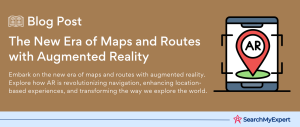What is Mobile AR?
In the realm of modern technology, Mobile Augmented Reality (Mobile AR) stands out as a transformative force. It merges the physical world with digital augmentation, creating an interactive experience that’s both innovative and immersive. Let’s delve into this fascinating world, exploring its core concepts, various types, and the significant impact it has on everyday life.
The Core Concept of Mobile AR
Mobile AR is a technology that superimposes digital content (like images, sounds, videos) onto the real world. This is achieved through a mobile device’s camera, offering a composite view that blends the real and the virtual. It’s an experience that captivates and engages, transforming how we interact with our surroundings.
- Real-Time Interaction: Mobile AR responds in real-time, changing the digital overlays as the environment or user’s perspective shifts.
- Enhanced Reality:
It enriches the real world by adding layers of digital information, providing a more informative and engaging experience. - Accessibility:
With the ubiquity of smartphones, mobile AR is easily accessible, bringing augmented reality to the masses.
Types of Mobile AR
Mobile AR comes in various forms, each offering unique experiences and applications:
- Marker-Based AR:
This type utilizes specific markers like QR codes to trigger the display of digital content. When the device’s camera recognizes these markers, it overlays digital images or information on them. - Location-Based AR:
It uses GPS, digital compasses, and accelerometers in smartphones to provide information based on your geographical location. This type is popular in navigation aids and local information apps. - Projection-Based AR: This involves projecting artificial light onto real-world surfaces and then sensing human interaction with these projections. It’s like turning any surface into a touchscreen.
Mobile AR is not just a technological novelty; it’s a tool that reshapes how we view and interact with the world. From enhancing shopping experiences to revolutionizing education and gaming, the possibilities are vast and continually evolving.
Understanding the AR Ecosystem
Hardware and Software Platforms
Augmented Reality (AR) is not just about the software; it’s an intricate dance between hardware and software. To truly grasp the AR ecosystem, one must understand both the platforms that create AR experiences and the hardware that brings them to life. Let’s dive into some of the key players in the AR world.
AR Development Platforms
Developing AR applications requires robust platforms. Here are some of the leaders:
- Unity: A powerhouse in game development, Unity is also a leading platform for AR development. It offers versatility, supporting both ARKit and ARCore, and has a vast library of assets and plugins.
- ARKit (iOS):
Developed by Apple, ARKit is a framework for building AR experiences on iOS devices. It offers advanced face tracking, motion capture, and environment understanding capabilities. - ARCore (Android): Google’s answer to ARKit, ARCore enables AR development on Android devices. It supports environmental understanding, light estimation, and motion tracking.
- Vuforia:
A cross-platform AR solution, Vuforia is known for its robust image recognition capabilities, supporting both 2D and 3D image targets.
Each platform has its strengths and caters to different needs in the AR landscape.
Capabilities and Limitations of Mobile Devices
The performance of AR heavily depends on the hardware it runs on. Here’s what to consider:
- Processing Power: High-end smartphones offer better AR experiences due to their superior processing capabilities. They can handle complex AR tasks more efficiently.
- Camera Quality: The camera plays a crucial role in AR. Better cameras provide higher resolution and more accurate environment mapping.
- Sensors:
Gyroscopes, accelerometers, and depth sensors enhance AR experiences by providing accurate device orientation and depth information. - Battery Life:
AR applications are resource-intensive. Devices with longer battery life ensure longer uninterrupted AR experiences. - Display Quality:
High-resolution displays offer clearer and more immersive AR visuals.
Understanding the interplay between software and hardware is crucial for anyone delving into the world of AR. This knowledge not only informs development choices but also shapes the user experience.
Choosing the Right Development Tools
Programming Languages and Frameworks
When venturing into the world of AR development, choosing the right tools is pivotal. This choice not only affects the development process but also the quality and capabilities of the final product. Let’s explore the programming languages and frameworks that are key players in AR development.
Programming Languages for AR Development
Selecting a programming language for AR development depends on several factors, including the chosen platform, project requirements, and the developer’s expertise. Here are some of the top choices:
- C++: Known for its speed and efficiency, C++ is often used in performance-critical AR applications.
- Java:
Especially relevant for Android-based AR development, Java is known for its portability and extensive community support. - C#:
A popular choice for AR development on the Unity platform, C# offers a balance of power and ease of use.
Each language has its strengths and is suited for different aspects of AR development.
AR-Specific Frameworks and Libraries
Frameworks and libraries specifically designed for AR can significantly streamline the development process. They provide pre-built functionalities essential for AR such as object recognition, tracking, and scene management. Some notable mentions include:
- ARToolKit:
A popular open-source library that supports both marker-based and markerless tracking. - OpenCV:
Primarily known for computer vision tasks, it’s also used in AR for image processing and camera calibration. - EasyAR:
Offers features like 3D object tracking, screen recording, and cloud recognition. - Wikitude: A comprehensive AR toolset known for its image and object tracking and location-based AR services.
Using these tools, developers can create sophisticated AR experiences with more efficiency and less complexity. They allow for a focus on creativity and innovation, rather than getting bogged down in technical details.
Designing for Mobile AR
User Interface and Interaction
Crafting an engaging and functional Mobile AR experience is as much an art as it is a science. It demands a thoughtful approach to user interface and interaction design. Here’s how you can design interfaces that are not only intuitive but also enhance the immersive quality of AR.
Intuitive and User-Friendly Interfaces
The interface in an AR environment acts as a bridge between the user and the digital world. Here are key considerations:
- Simplicity is Key:
Overcomplicated interfaces can overwhelm users. Keep it simple and intuitive. - Contextual Information:
Provide information that’s relevant to what the user is viewing or interacting with at the moment. - Touch and Gesture Controls: Leverage the natural interaction methods of mobile devices. Simple gestures and touch controls can make interactions feel more natural and engaging.
- Visual Feedback:
Offer immediate visual feedback for user interactions to confirm actions and guide the next steps.
Performance and Battery Efficiency
In Mobile AR, the device is not just a display; it’s an integral part of the experience. Here’s how to prioritize performance and battery life:
- Optimize for Performance:
AR is processing-intensive. Optimize your application to minimize lag and ensure smooth performance. - Battery Life Considerations: Users might hold their devices for extended periods. Design your app to be battery efficient to prolong the AR experience.
- Adaptive Quality: Implement adaptive quality levels that can adjust based on the device’s current performance and battery life.
- Ergonomics:
Design the experience considering how long and in what manner users will be holding their device. Comfort can significantly impact user satisfaction.
Designing for Mobile AR is about creating an experience that feels as natural and intuitive as interacting with the real world. It’s about making the digital content feel like it truly belongs in the user’s environment.
Developing and Testing Your AR App
Building Your AR Experience
The development phase of an AR app is where concepts and designs come to life. It’s a phase of creating, integrating, and refining the elements that make up your AR experience. Let’s break down the key steps in this process.
Implementing App Functionalities
Creating an AR app involves a blend of various technologies and creative elements:
- Integration of AR Features: Implement AR capabilities such as image recognition, spatial tracking, and 3D object rendering.
- Incorporating 3D Models and Animations:
Enhance the AR experience with realistic 3D models and smooth animations. - Real-time Data Integration:
If your app requires, integrate real-time data to provide dynamic and updated content to users.
Each element should work in harmony to create an immersive and seamless AR experience.
Testing for Excellence
Testing is critical in ensuring the quality of your AR app. It involves:
- Device Compatibility Testing:
Test your app on a range of devices to ensure compatibility and optimal performance across different hardware. - Lighting Condition Tests:
AR heavily relies on the device’s camera. Test your app in various lighting conditions to ensure consistent performance. - User Experience Testing:
Gather feedback on the usability and intuitiveness of the app. Make adjustments based on user interactions and preferences. - Performance Optimization:
Continuously monitor and optimize the app for better performance, paying special attention to battery usage and processing demands.
Thorough testing not only enhances the user experience but also strengthens the reliability of your AR app.
Deployment and Monetization
Publishing Your AR App
The culmination of your AR app development journey is its launch in the market. This step involves navigating the intricacies of app store submissions and adhering to their guidelines. Let’s explore how to effectively deploy your AR app.
Preparing for App Store Submission
Publishing an app requires attention to detail and compliance with platform-specific requirements:
- Adherence to Guidelines:
Both Apple’s App Store and Google Play have specific guidelines. Ensure your app meets these to avoid rejection. - Optimized App Description and Keywords:
Craft a compelling app description and use relevant keywords for better visibility in the app stores. - Quality Screenshots and Demos:
Showcase your app’s features and AR capabilities through high-quality screenshots and demo videos. - Testing for Compliance:
Before submission, test your app thoroughly to ensure it meets the technical and quality standards of the app stores.
Monetization Strategies
Monetizing your AR app is crucial for sustainable success. Here are some effective strategies:
- In-App Purchases:
Offer additional features, content, or virtual items for purchase within the app. - Subscriptions: Implement a subscription model for ongoing access to premium features or content.
- Advertising:
Integrate ads into your app in a way that doesn’t hinder the user experience. Consider innovative AR-specific ad formats. - Freemium Model:
Offer the basic app for free, with the option to upgrade to a premium version with more features.
Choosing the right monetization strategy depends on your app’s nature and target audience. It’s about finding a balance between revenue generation and user satisfaction.
Staying Updated and Exploring the Future
Emerging Trends and Technologies
The field of Mobile Augmented Reality (AR) is rapidly evolving, with new technologies and trends emerging constantly. Staying informed and adaptable is key for any developer or enthusiast looking to make a mark in this exciting domain. Let’s explore the horizons of mobile AR and the ways to keep pace with its advancements.
The Latest Advancements in Mobile AR
The frontier of mobile AR technology is always expanding. Here are some of the latest trends and technologies:
- Spatial Computing:
This is about understanding and utilizing the space around us. It enables AR devices to interact more intelligently with their environment. - LiDAR Sensors: Found in newer smartphones, these sensors offer precise depth mapping, enhancing the accuracy and realism of AR experiences.
- AR Glasses:
A step towards more immersive AR, these wearable devices aim to blend digital content seamlessly into the user’s field of vision.
These advancements are pushing the boundaries of what’s possible in AR, creating more immersive and interactive experiences.
Engaging with the AR Development Community
Staying updated is not just about technology; it’s also about community engagement:
- Participate in Forums and Online Communities: Platforms like Reddit, Stack Overflow, and AR-specific forums are great for sharing knowledge and staying informed.
- Attend Workshops and Conferences: These events are opportunities to learn from industry leaders and network with other AR professionals.
- Collaborate and Learn: Engaging in collaborative projects or hackathons can provide hands-on experience with the latest AR technologies.
Conclusion
Mobile Augmented Reality (AR) is reshaping our digital interactions, merging the real with the virtual. Key highlights include the importance of selecting appropriate development tools, focusing on user-centric designs, and the necessity of rigorous testing. Smart deployment and ongoing learning are essential in this rapidly evolving field. As we look ahead, the potential of Mobile AR is vast, promising more immersive and innovative experiences in various sectors.
Elevate your immersive experiences with AR & VR Development Service Companies.
Table of Contents
Toggle






